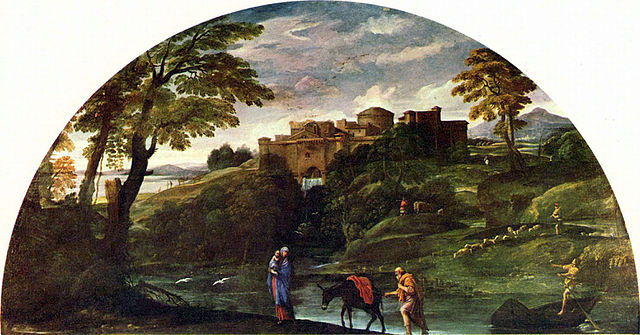
Title: Flight into Egypt
Artist: Annibale Carracci
Date Painted: c. 1604
Medium: Oil on Canvas
Period: Baroque
Location: Galleria Doria Pamphilj, Rome
Summary of Flight into Egypt
The Flight into Egypt by Annibale Carracci is a notable work in the history of art, embodying the Baroque period‘s shift towards more naturalistic and emotionally resonant representations of biblical scenes. Created in the late 16th or early 17th century, this painting depicts the biblical episode where the Holy Family (Joseph, the Virgin Mary, and the infant Jesus) flee to Egypt to escape King Herod’s decree that all newborn boys in Bethlehem be killed, as described in the Gospel of Matthew.
Carracci’s interpretation of this scene is celebrated for its depiction of the Holy Family in a moment of serene, yet poignant, journeying. Unlike earlier, more static renditions, Carracci infuses the scene with a sense of movement and emotional depth, emphasizing the humanity of his subjects. The landscape plays a significant role in the composition, providing a backdrop that reflects the journey’s gravity and the divine protection guiding them.
The painting is also noted for its use of light and shadow, which Carracci masterfully manipulates to highlight the figures and add depth to the scene. His technique reflects the Baroque era’s broader artistic goals: to engage viewers emotionally and spiritually, making biblical stories feel immediate and real.
Annibale Carracci was a pivotal figure in the Baroque movement, and his “Flight into Egypt” stands as a testament to his skill in blending the ideal with the natural, setting a new standard for religious art. His work paved the way for future artists by demonstrating the power of art to convey profound religious experiences in a way that resonates with the viewer’s emotions and senses.